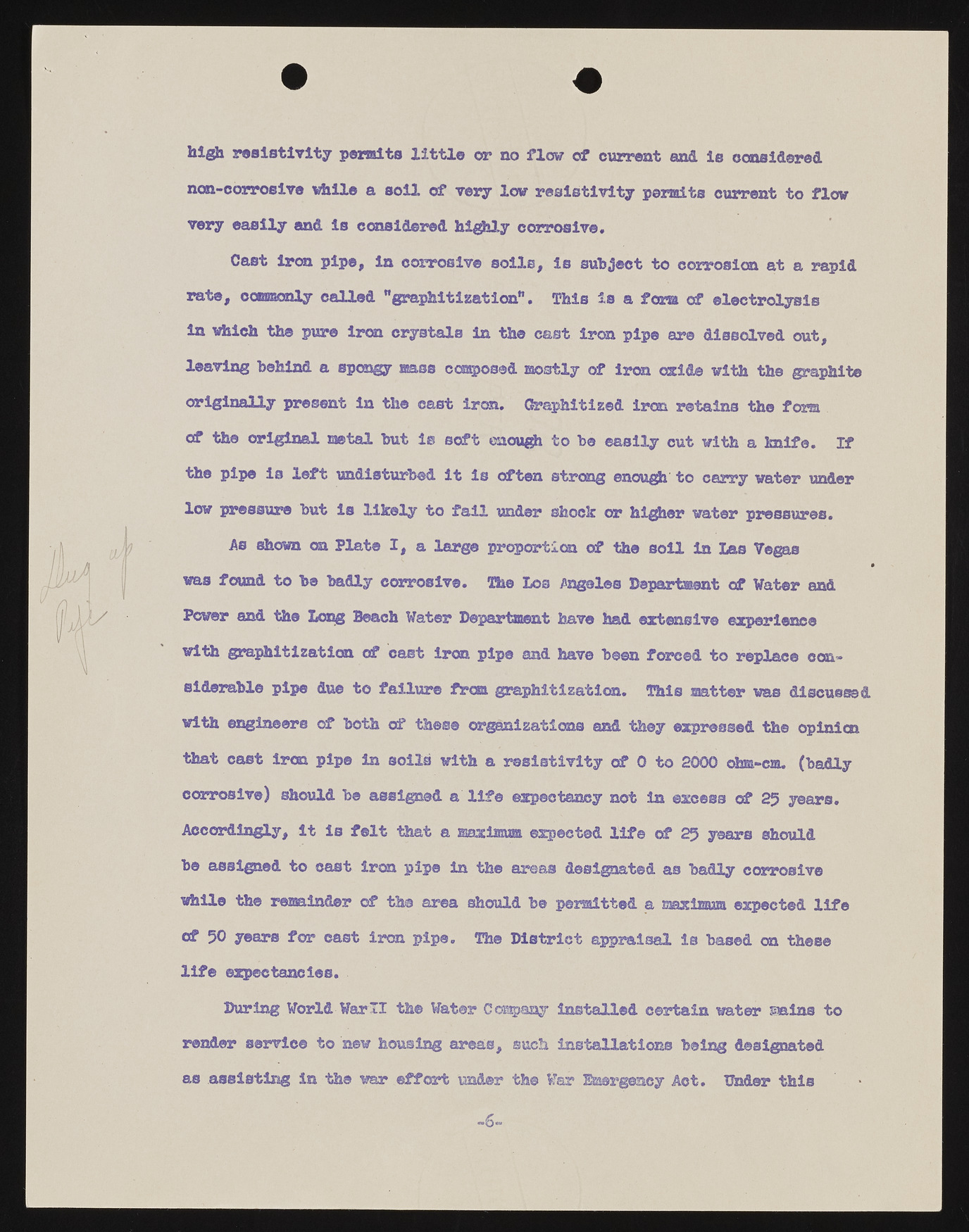Copyright & Fair-use Agreement
UNLV Special Collections provides copies of materials to facilitate private study, scholarship, or research. Material not in the public domain may be used according to fair use of copyrighted materials as defined by copyright law. Please cite us.
Please note that UNLV may not own the copyright to these materials and cannot provide permission to publish or distribute materials when UNLV is not the copyright holder. The user is solely responsible for determining the copyright status of materials and obtaining permission to use material from the copyright holder and for determining whether any permissions relating to any other rights are necessary for the intended use, and for obtaining all required permissions beyond that allowed by fair use.
Read more about our reproduction and use policy.
I agree.Information
Digital ID
Permalink
More Info
Rights
Digital Provenance
Publisher
Transcription
high resistivity permits little or no flow of current and is considered non-corrosive while a soil of very low resistivity permits current to flow very easily and is considered highly corrosive. Cast iron pipe, in corrosive soils, is subject to corrosion at a rapid rate, commonly called "graphitization". This is a form of electrolysis in which the pure iron crystals in the cast iron pipe are dissolved out, leaving behind a spongy mass composed mostly of iron oxide with the graphite originally present in the cast iron. Graph!tized iron retains the form of the original metal but is soft enough to be easily cut with a knife. If the pipe is left undisturbed it is often strong enough to carry water under low pressure but is likely to fall under shock or higher water pressures. As shown on Plate I, a large proportion of the soil in Las Vegas i was found to be badly corrosive. The Los Angeles Department of Water and Power and the Long Beach Water Department have had extensive experience with graphltlzatlcn of cast iron pipe and have been forced to replace considerable pipe due to failure from graphitization. This matter was discussed with engineers of both of these organizations and they expressed the opinion that cast iron pipe in soils with a resistivity of 0 to 2000 ohm-cm. (badly corrosive) should be assigned a life expectancy not in excess of 25 years. Accordingly, it is felt that a maximum expected life of 25 years should be assigned to oast iron pipe in the areas designated as badly corrosive while the remainder of the area should be permitted a maximum expected life of 50 years for cast iron pipe. The District appraisal is based on these life expectancies. During World WarII the Water Company installed certain water sains to render service to new housing areas, such installations being designated as assisting in the war effort under the War Emergency Act. Under this A

